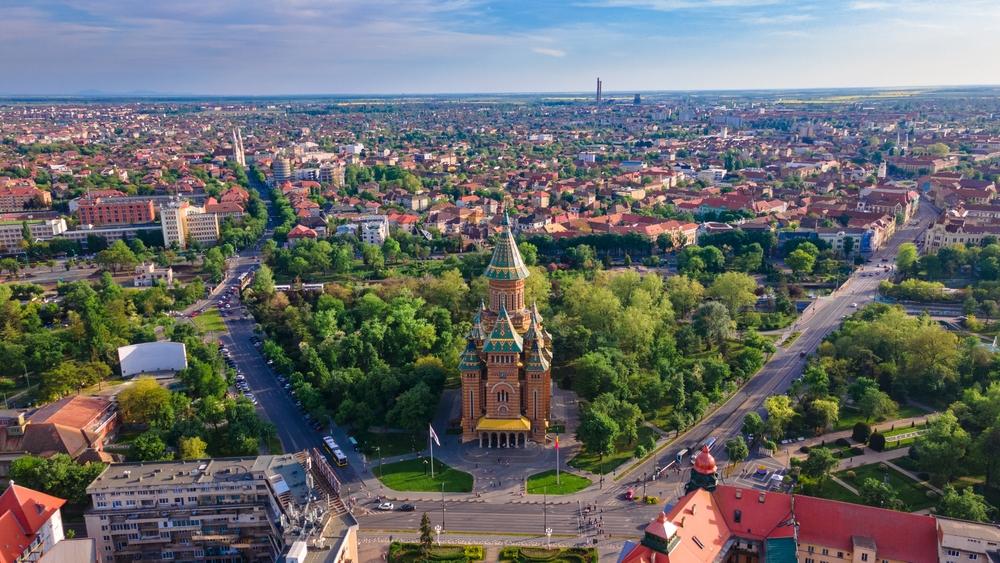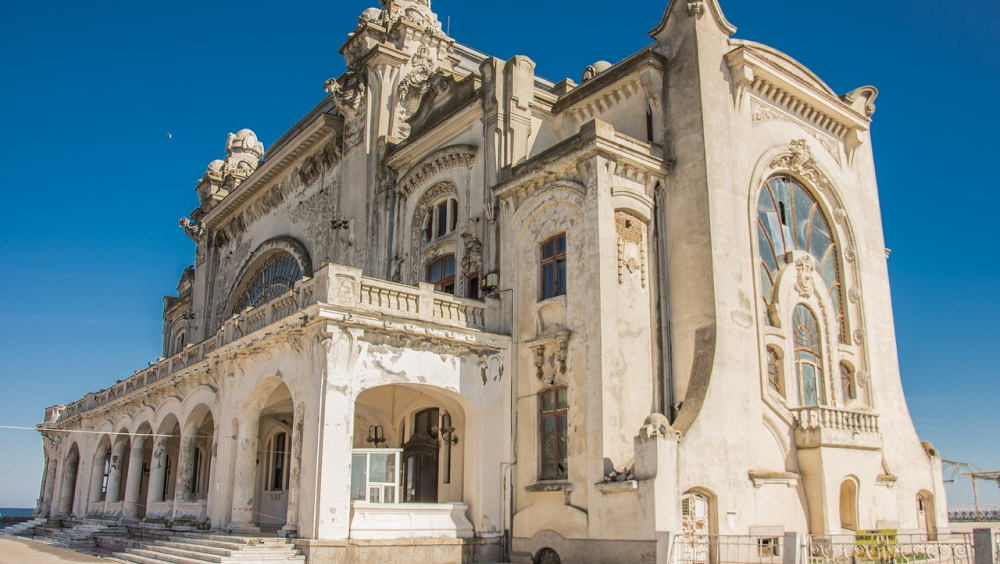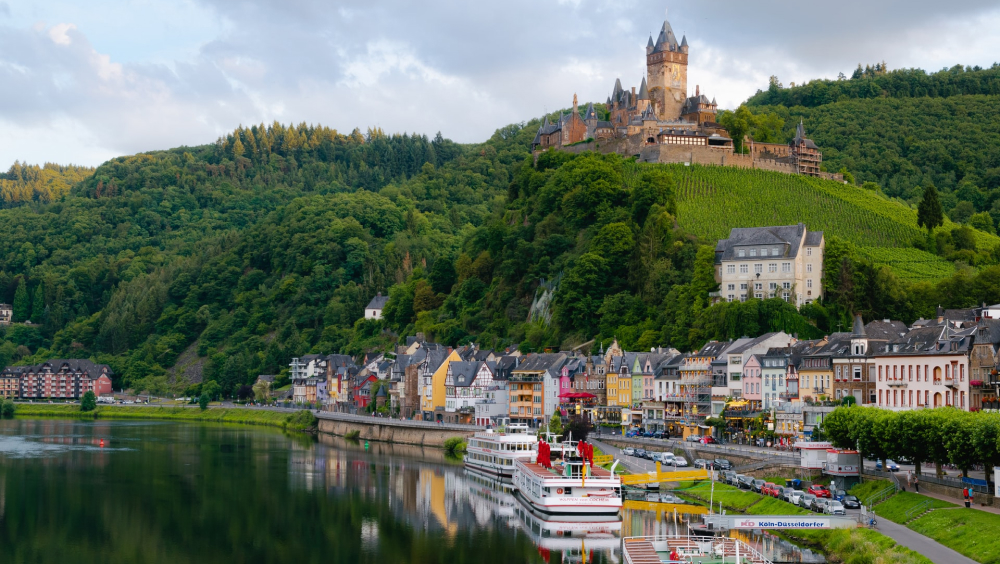The most beautiful monasteries in Romania – top 10 places to visit
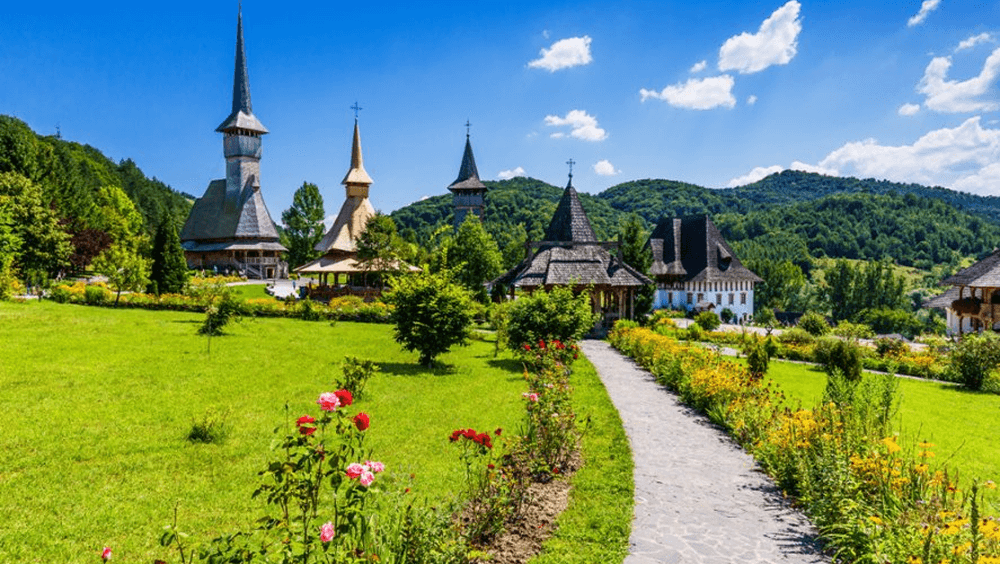
Romania’s monasteries are a spiritual and cultural treasure, reflecting the history and faith of the Romanian people. These places of worship stand out for their diverse architecture, combining Byzantine, Gothic and traditional Romanian styles, thus creating unique ensembles. The murals and frescoes, some of which date back to the 15th-16th centuries, are true works of art, and their setting in picturesque natural settings adds to their charm, adding to their beauty and tranquillity.
Below, we invite you to discover ten of the most remarkable monasteries and what makes them special.
- Top 10 most beautiful monasteries in Romania
- Curtea de Argeș Monastery
- Moldovița Monastery
- Horezu Monastery
- Sucevița Monastery
- Agapia Monastery
- Tismana Monastery
- Cozia Monastery
- Monastery of Neamț
- Putna Monastery
- Voroneț Monastery
- Monasteries in Romania – places of pilgrimage and recollection
Top 10 most beautiful monasteries in Romania
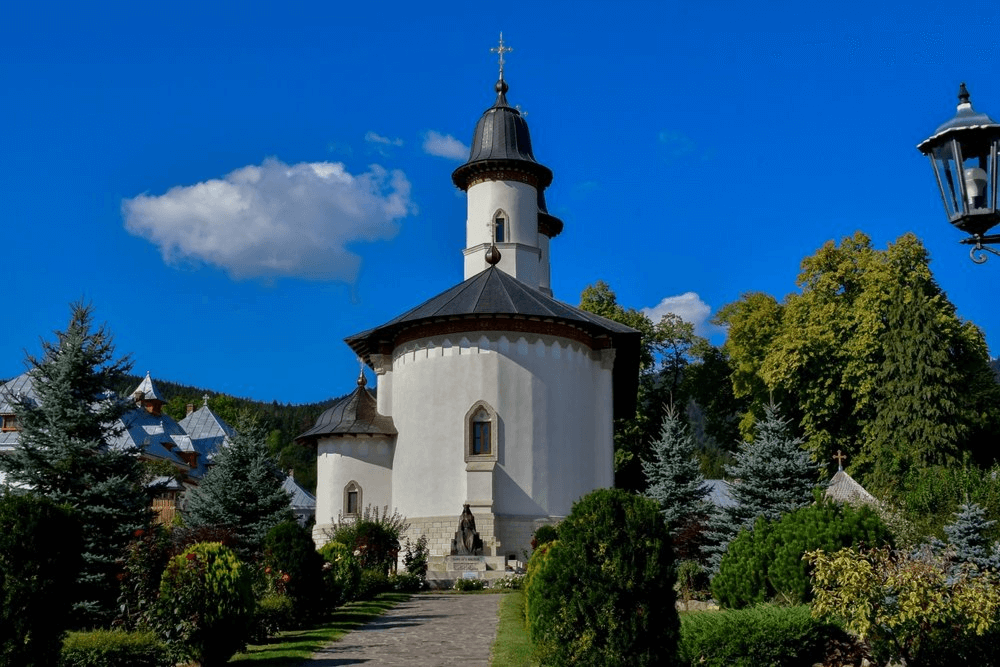
Although there are many monasteries famous either for the beauty of their setting or for the works of art they contain, we have chosen for you 10 of the most representative Romanian monastic monasteries.
1. Curtea de Arges Monastery
2. Moldovița Monastery
3. Horezu Monastery
4. Sucevița Monastery
5. Agapia Monastery
6. Tismana Monastery
7. Cozia Monastery
8. Neamț Monastery
9. Putna Monastery
10. Voroneț Monastery
1. Curtea de Argeș Monastery

Curtea de Argeș Monastery is one of the most famous monasteries in Romania, located in the town of the same name, in Argeș County. It was built in the 16th century by the ruler Neagoe Basarab and is recognized for its impressive architecture, inspired by the Byzantine style, combined with Arabic elements.
The monastery’s church has a unique shape and exquisite sculptural details, and the legend of Master Manole, related to the building of the church, is part of Romanian cultural heritage. The monastery houses the tombs of rulers and members of the royal family, such as King Carol I and Queen Elisabeth.
The solemn atmosphere, the manicured gardens and the beauty of the building make this place an important pilgrimage center and a symbol of Romanian religious art. Visitors are impressed by the balance between the strength of history and the spiritual tranquillity that the monastery conveys.
Access: easy to reach by car from Pitesti (approx. 40 km), on DN7C.
Sights in the area: Poenari Fortress, Transfăgărășanul, Vidraru Dam, Fântâna lui Manole Park.
▶️Wherever your vacation plans take you and no matter where you want to discover, Enterprise offers you a rental car, so that every trip with your loved ones becomes an unforgettable memory.
2. Moldovița Monastery

Moldovița Monastery is located in the village of Vatra Moldoviței, Suceava County, and is one of the most beautiful monasteries in northern Moldova. It was built in 1532, during the reign of Petru Rareș, and stands out for its Moldavian-style architecture, which harmoniously combines Byzantine and Gothic influences.
The monastery’s church, dedicated to the Annunciation, impresses with its well-preserved exterior painting. The brightly colored frescoes, painted in the 16th century, depict biblical scenes and important moments in Christian history, such as the Last Judgment and the Siege of Constantinople. These paintings are considered true works of art, prized for the depth of their message and expressive details.
The monastery is also home to a small museum with cult objects, old manuscripts and valuable icons. Surrounded by wooded hills, Moldovița offers a peaceful and spiritual atmosphere and is visited by pilgrims and tourists from all over the world. It is a harmonious blend of faith, art and history.
Access: from Suceava go to Câmpulung Moldovenesc, then to Vatra Moldoviței. The road is paved, accessible by car.
Sights in the area: Huțulca Mönica, Ciumârna Pass (“Palma”), Sucevița Monastery, egg-laying workshops.
3. Horezu Monastery
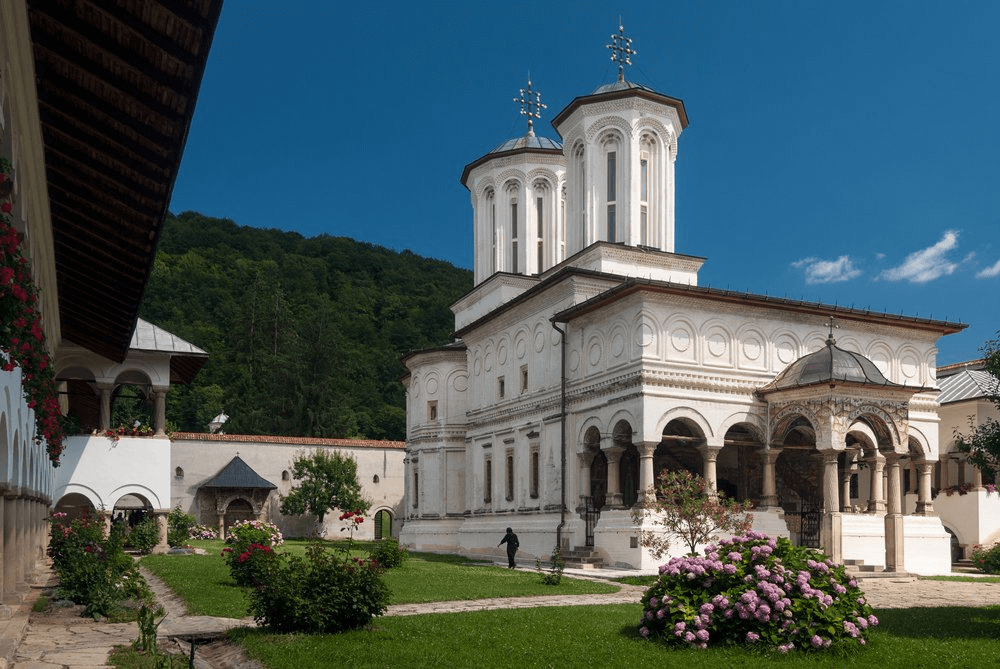
Situated in Valcea County, Horezu Monastery is a reference monument of the Brâncovenesque style, being founded in 1690 by Prince Constantin Brâncoveanu. The building impresses with its architectural balance, floral stone decorations and detailed mural paintings.
The main church, dedicated to Saints Emperors Constantine and Helen, preserves a remarkable interior painting, reflecting the balance between Byzantine tradition and the artistic innovation of the time. The monastery was also an important cultural center, hosting a school of painting and manuscript copying.
The peaceful surroundings and the natural beauty of the area complete the charm of this monastic settlement, which is now a UNESCO World Heritage Site. It is a place where faith, art and nature come together in a harmonious and inspiring way.
Access: from Râmnicu Vâlcea on DN67, good road, easy access by car.
Sights in the area: Horezu Pottery Workshops (UNESCO), Govora Baths, Olănești Baths, Culele de la Măldărești.
4. Sucevița Monastery
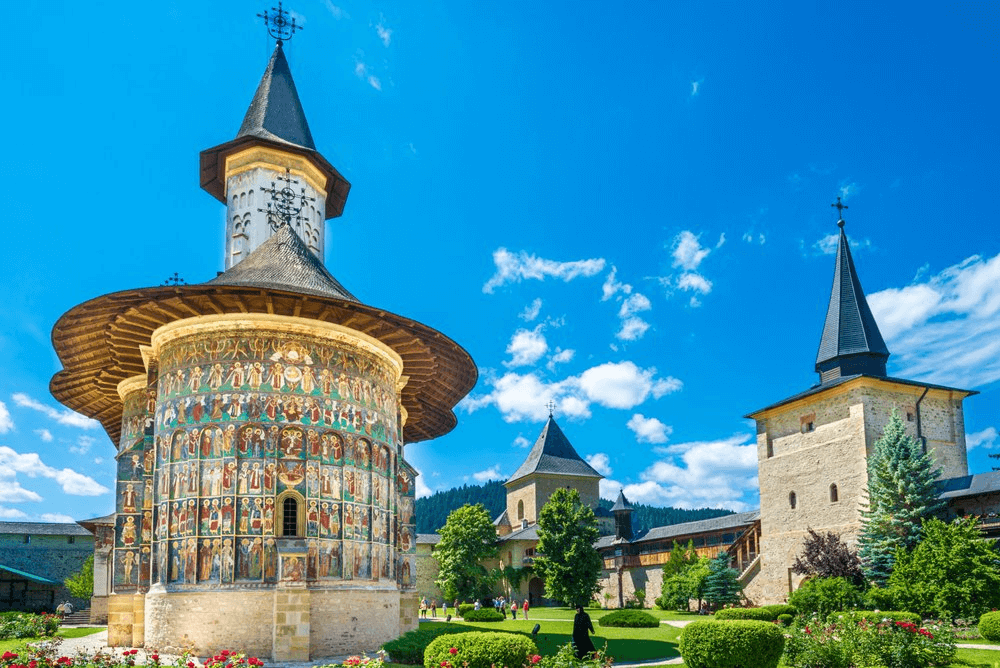
Sucevița Monastery is one of the most beautiful and best preserved monasteries in northern Moldavia, located in Suceava County, in a special landscape, surrounded by wooded hills. Built at the end of the 16th century by the Movilă family, the monastery harmoniously combines spiritual and defensive functions, being fortified with thick walls and massive defense towers.
The Church of the Resurrection of the Lord stands out for the elegance of the Moldavian architecture, but especially for the exterior mural painting, of exceptional artistic value. The paintings painted around 1601 are brightly colored and remarkably preserved, illustrating biblical and didactic scenes. The most famous is the ‘Staircase of Virtues’, an impressive composition symbolizing man’s struggle for salvation, depicting souls ascending to heaven under the gaze of angels and saints.
The interior of the church completes the ensemble with exquisite paintings and a solemn atmosphere. The monastery is also home to a small museum with cult objects, embroideries and valuable manuscripts. Since 2010, Sucevița has been part of the UNESCO World Heritage, along with other painted churches in Moldova.
Today, Sucevița Monastery continues to be an active place of prayer and monastic life, but also an important cultural and touristic landmark, visited by pilgrims and tourists from all over the world, attracted by the beauty of art and the peace that reigns within its walls.
Access: the church is located between Rădăuți and Câmpulung Moldovenesc, accessible on DN17A.
Points of interest in the area: Moldovița Monastery, Museum of Eggs from Vama, Ciumârna Pass, Rădăuți – Bogdana Church.
▶️ Subscribe to the Enterprise Romania newsletter and get a 25€ discount on your next rental.
5. Agapia Monastery

Situated in a picturesque natural setting in the Neamt County, Agapia Monastery is one of the largest convents of nuns in Romania. Built in the 17th century, it is best known for its interior painting by Nicolae Grigorescu, when he was just 18 years old.
The church is dedicated to St. Archangel Michael and stands out for its warm, harmonious atmosphere, but also for the originality of the frescoes, which combine Orthodox tradition with Western influences. The monastery also houses a museum with icons, embroideries and old manuscripts illustrating the spiritual life of the community.
The flower-filled gardens, white buildings and tranquility make Agapia a place of refuge and meditation. The monastery attracts thousands of visitors every year and is a symbol of spiritual beauty and Moldovan culture.
Access: from Targu Neamt, on DN15C towards Agapia. The road is paved, with easy access.
Sights in the area: Ion Creangă Memorial House (Humulești), Neamț Fortress, Văratec Monastery, “Codrii de Aramă” Reservation.
6. Tismana Monastery
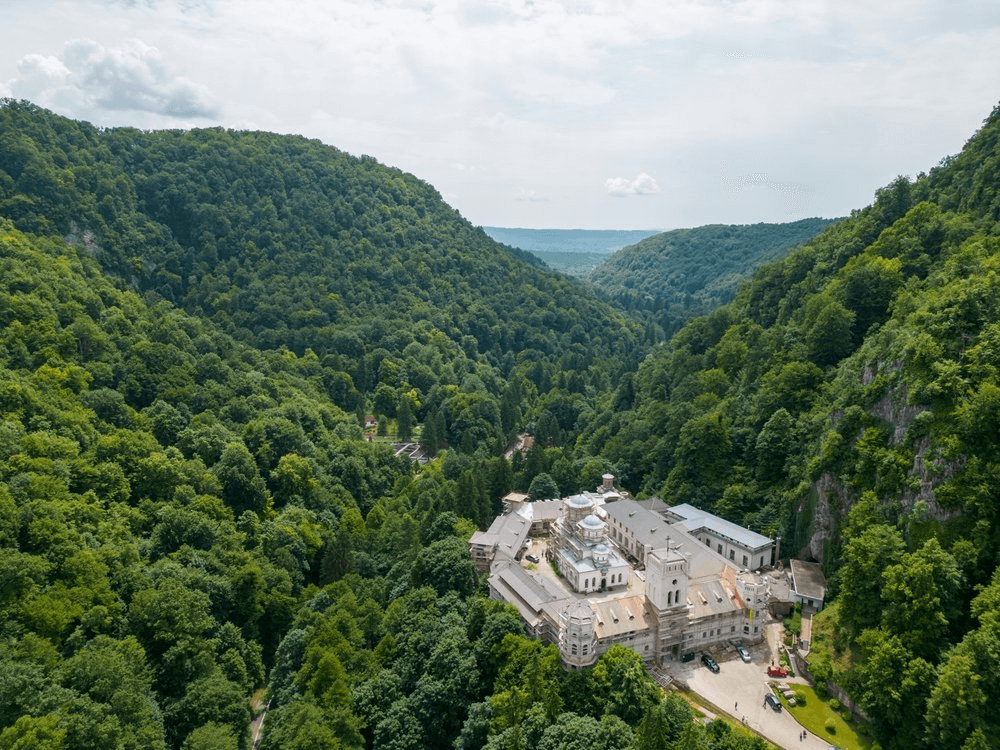
Tismana Monastery, one of the oldest Orthodox monasteries in Romania, is located in Gorj County, in a spectacular natural setting at the foot of the Valcan Mountains. It was founded in the 14th century by monk Nicodemus of Tismana, a great reformer of monastic life.
Built in a sober architectural style, with Byzantine influences, the church is dedicated to the Assumption of the Virgin Mary and impresses by the harmony of proportions and simplicity of decoration. Over the centuries, the monastery has played an important role in the spiritual and cultural life of the country, being a center of calligraphy and manuscript copying.
Tismana is surrounded by dense forests and steep cliffs, offering a beautiful landscape and an atmosphere of retreat and tranquility. Visitors find here not only natural beauty and history, but also a place of prayer and deep reflection.
Access: from Targu Jiu (approx. 30 km). The road is good, with clear signs.
Objectives in the area: Cheile Sohodolului, Mount Oslea, Ecaterina Teodoroiu Memorial House, Defileul Jiului.
7. Cozia Monastery

Located on the right bank of the Olt, in Valcea County, Cozia Monastery is one of the most valuable foundations of the ruler Mircea the Elder, built in 1388. The church is dedicated to the Holy Trinity and is a representative example of Byzantine architecture in Romania.
The interior still preserves original 14th-century murals, and the tomb of Mircea the Elder is located in the pronaos. The monastery was an important cultural center in the Middle Ages, with an active monastic school and a valuable scriptorium.
Surrounded by mountains and overlooking the waters of Olt, Cozia offers an atmosphere of peace and balance. It is visited by many believers and tourists, who want to discover the beauty of religious art and to relax in a place steeped in history and spirituality.
Access: the monastery is located on DN7 (E81), between Râmnicu Vâlcea and Sibiu, in the Călimănești-Căciulata resort. Access is very easy by car.
Sights in the area: Ca Căciulata Baths, Cozia National Park, Turnu Monastery, Ostrov Hermitage.
8. Neamț Monastery
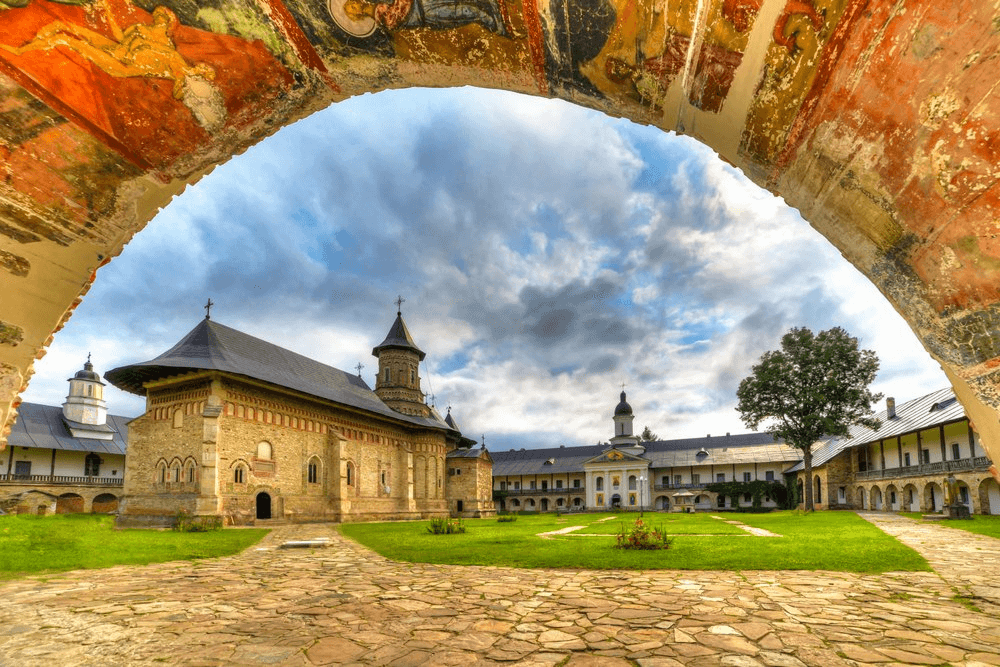
Neamț Monastery, located in northeastern Romania, in Neamț County, is one of the oldest and most important Orthodox monastic settlements in the country. Founded in the 14th century, the monastery flourished during the reign of Stephen the Great, who contributed significantly to the development of the monastic complex.
The Church of the Ascension, built between 1497 and 1498, is an outstanding example of Moldavian architecture, harmoniously combining Byzantine and Gothic influences. The interior preserves valuable murals and the monastery library houses rare medieval manuscripts and important historical documents.
Over the centuries, Neamț Monastery has been an important spiritual, cultural and educational center, hosting a prestigious school of calligraphy and miniature. Among the notable personalities who lived here are Metropolitan Dosoftei and the scholar Paisie Velicicovschi.
Today, Neamț Monastery is a place of pilgrimage, attracting visitors with its architectural beauty, spiritual charge and the picturesque landscape in which it is situated at the foot of the Stânișoarei Mountains.
Access: from Târgu Neamț, on the DJ155C, easy to reach by car.
Sights in the area: Neamț Citadel, Sihăstria Monastery, Vânători-Neamț Natural Park, Dragoș Vodă Zimbrăria.
▶️ Share with us moments from your hikes to Neamt Monastery on Instagram, give us TAG and let’s admire together the spectacular landscapes from your road trips!
9. Putna Monastery
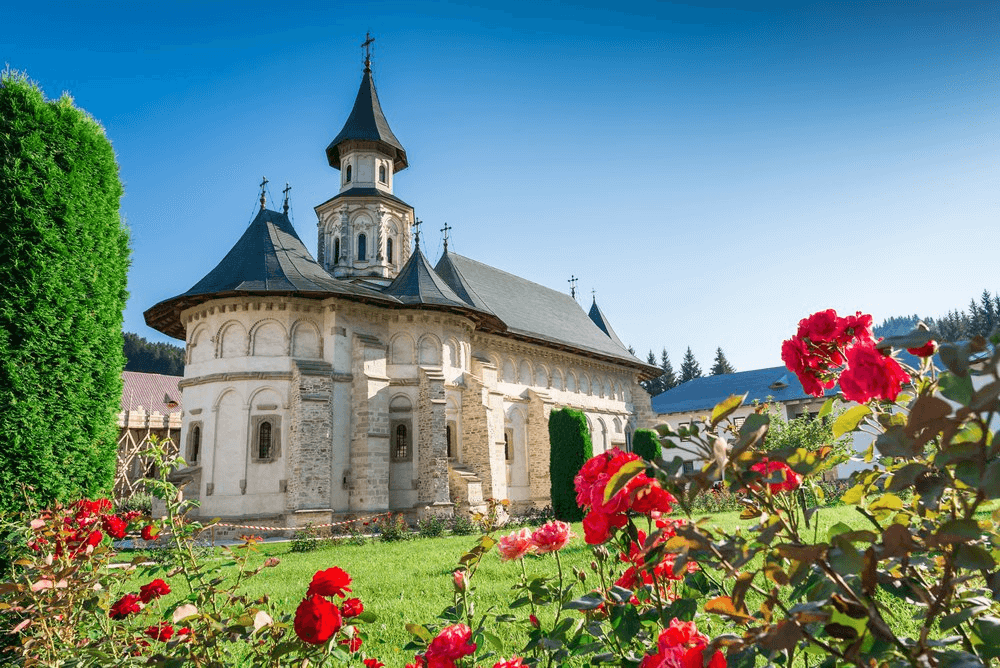
Putna Monastery is a sacred place ste steeped in history, located in Suceava County, in the Moldavian region of northeastern Romania. Founded in 1466 by Stephen the Great, this Orthodox monastery is one of the most important and famous in the country. Putna Monastery was erected as a place of worship and defense of the Moldavian Country against external threats.
The monastery complex also includes the Church of St. John the Baptist, which preserves the tomb of Stephen the Great. The monastery’s architecture is in the Moldavian style, with Gothic and Renaissance elements. The impressive façade of the church is decorated with sculptures and frescoes depicting biblical scenes and historical events.
There are other important buildings within the monastery, such as the bell tower, the defense tower and the monks’ monastery. The atmosphere of tranquility and spirituality delights visitors who come to worship, as well as art and history enthusiasts.
Access: from Rădăuți or Suceava, on DN2H, then DJ209A.
Sights in the area: Tomb of Stephen the Great, Daniil Sihastrul’s Chilia, Sihăstria Putnei Monastery.
10. Voroneț Monastery
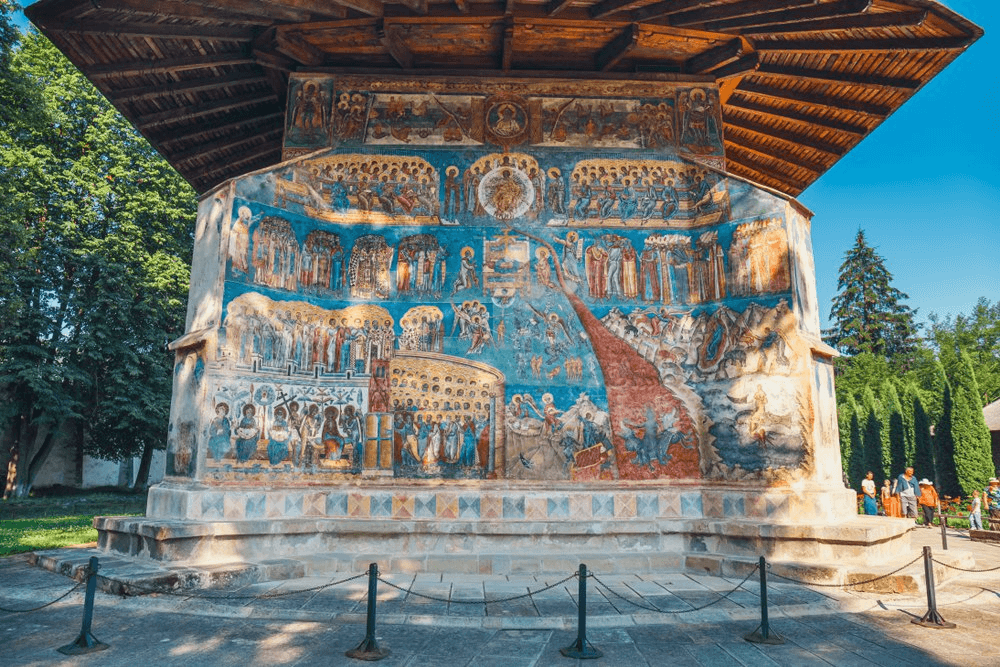
Voroneț Monastery is considered one of the most valuable creations of Romanian medieval art. Situated near the town of Gura Humorului, in Suceava County, it was founded in 1488 by the voivode Stephen the Great, following the victory against the Ottomans at Razboieni. Legend has it that the monastery was built in just three months and three weeks, a remarkable feat for the time.
The church is dedicated to “St. George” and is especially famous for its exterior frescoes, realized in the first half of the 16th century. The dominant color, ‘Voroneț blue’, has become emblematic because of its durability and intense beauty. The painting “The Last Judgment” on the west façade is one of the most impressive works of religious art in the world, illustrating the Orthodox vision of the afterlife in a masterly and profound manner.
The interior of the church is equally rich in murals, with biblical scenes, saints’ lives and theological symbols, all done in an expressive and narrative style. The compositions are clear, colorful and deeply spiritual.
Voroneț Monastery is a UNESCO World Heritage Site and is visited by hundreds of thousands of people every year. It is not only a monument of religious architecture and painting, but also a symbol of Romanian spiritual and cultural identity. The peaceful atmosphere, yet steeped in history, makes this place a true sanctuary of art and faith.
Access: the settlement is located 4 km from Gura Humorului, on a paved road, accessible by car.
Sights in the area: Humor Monastery, Arinis Park, Falcon ski slope, Museum of Popular Customs.
▶️ Find out more about other historic places in the country that you can see on vacation in the article On the roads of the past – 15 historic monuments in Romania that you can visit by car.
Romania’s monasteries – places of pilgrimage and meditation
Romania is a country with a deep Orthodox tradition, and its monasteries are not only monuments of art and history, but also living centers of spirituality. Throughout the year, tens of thousands of pilgrims travel long distances to reach holy places in search of healing, tranquility and an encounter with the divine. Among the most visited monasteries are:
Nicula Monastery
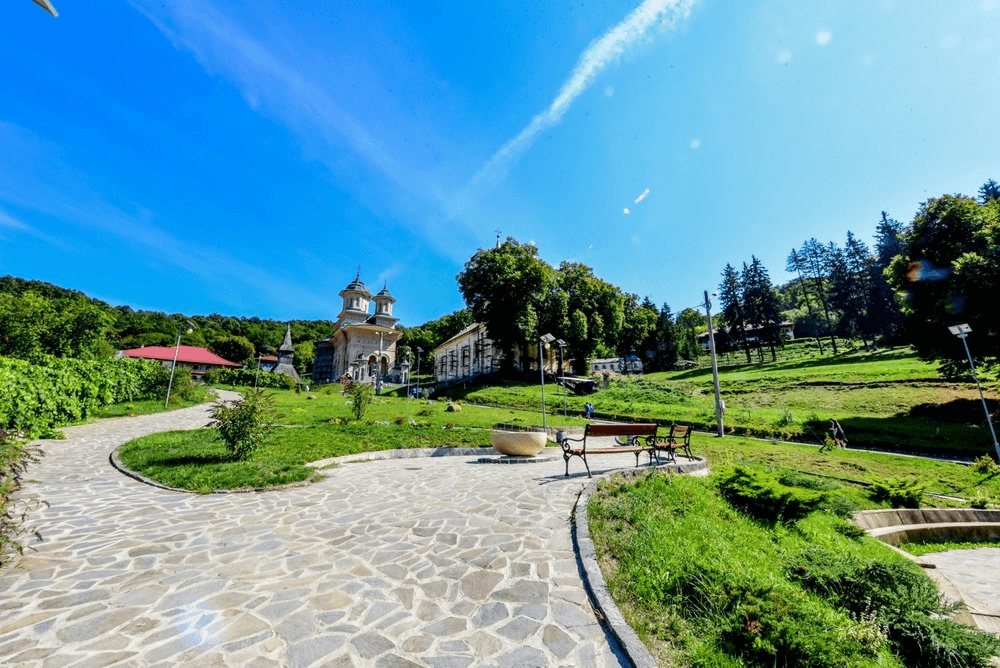
Known for its miraculous icon of the Virgin Mary, which, according to popular belief, wept in 1699, Nicula Monastery attracts tens of thousands of believers every year, especially on the feast of the Assumption of the Virgin Mary (August 15). Pilgrims walk up the hill to the monastery, some barefoot, others in silent prayer.
The atmosphere is one of deep recollection, but also of communion between people. The place is charged with a soothing energy that seems to pour from the venerated icon.
Access: by car from Cluj-Napoca (about 50 km), on DN1C, then DJ109C. During the big pilgrimages (especially in August), the area becomes crowded, but access is well organized.
Sights in the area: Armenian Cathedral and museum in Gherla, Salina Turda (about 45 km away), Botanical Garden in Cluj-Napoca.
Prislop Monastery
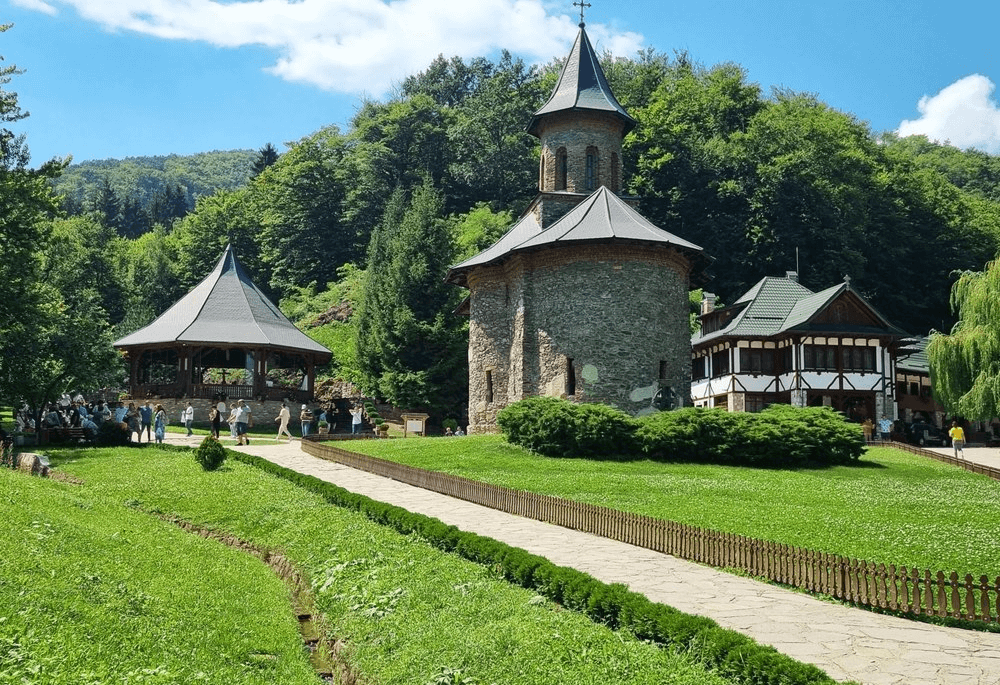
The resting place of Fr. Arsenie Boca, recently made one of the saints, has become one of the most important pilgrimage sites in the country in recent decades. Thousands of people come to the tomb every day to pray, ask for help or thank him.
Set in a beautiful mountain landscape, the monastery offers not only tranquillity but also a strong sense of hope. It is said that many have found answers to difficult questions or received signs in times of trouble.
Access: from Hațeg or Petroșani, on DN66, then DJ687D to Silvașu de Sus. The last kilometers are on a narrow, but asphalted road.
Objectives in the area: Corvinilor Castle (Hunedoara), Slivuț juniper reserve, Sarmizegetusa Regia Dacian fortress, Ulpia Traiana Sarmizegetusa ruins.
Rohia Monastery
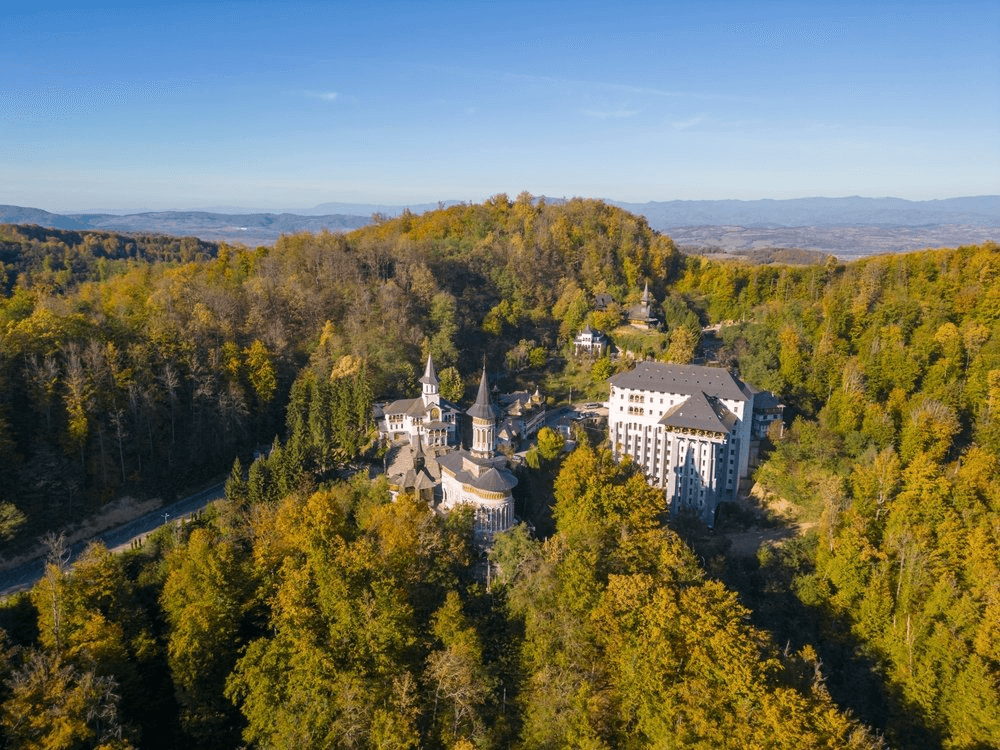
Known for its spectacular location on the top of a wooded hill, Rohia has become an important center of spirituality, especially due to the presence of Father Nicolae Steinhardt, who lived the last years of his life here. The monastery library is impressive, and the atmosphere is deep, intellectual and contemplative. Pilgrims come not only to pray, but also to feel the closeness of a free and enlightened spirit.
Access: located near the town of Targu Lăpuș. It can be reached on the DN18B, then on a narrow, asphalted road that climbs up to the monastery. Accessible by car, but requires careful driving.
Sights in the area: Târgu Lăpuș – authentic rural landscapes, Wooden Churches of Maramureș (UNESCO), Lake Lighet, hiking trails in the Lăpuș Mountains.
Sâmbăta de Sus Monastery
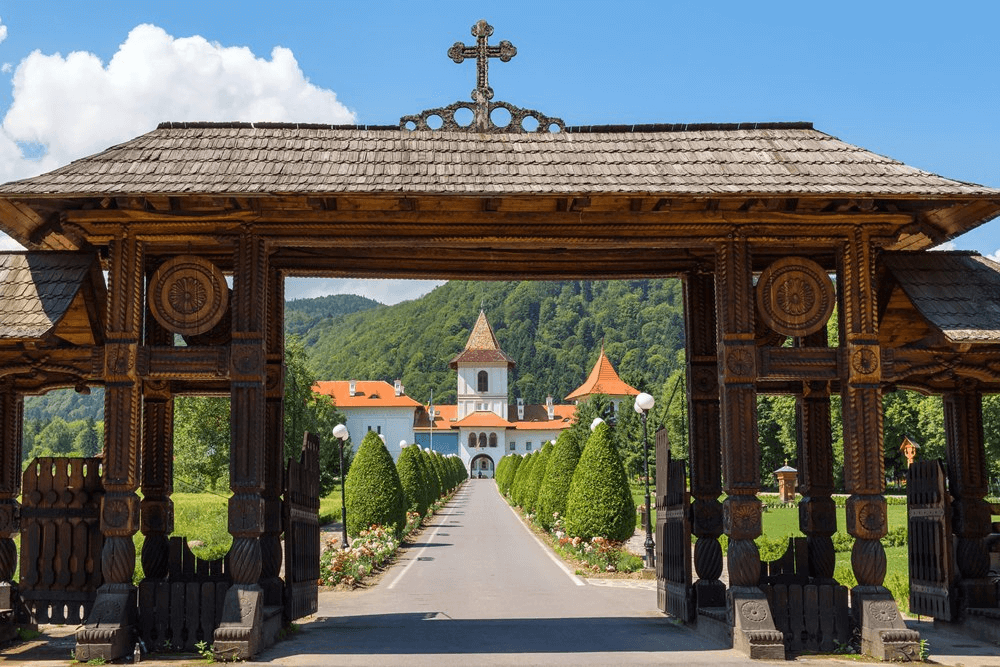
Located at the foot of the Făgăraș Mountains, this Brâncovenecian monastery is also associated with the figure of Father Arsenie Boca, who was abbot here in the 40s. Over time it has become a place of retreat and meditation for those seeking peace of mind. The healing springs, mountain scenery and beautiful architecture attract pilgrims from all over the country.
Access: from Făgăraș, take the DN1, then the DJ104A towards the resort of Sâmbăta de Sus. The road is paved and in good condition. Easy to reach by car from Sibiu, Brașov or Făgăraș.
Points of interest in the area: the spring and the chapel of Father Arsenie Boca, the climatic resort of Sâmbăta, the Făgăraș Mountains (trails to the Sâmbetei Valley Hut), Brukenthal Castle in Avrig.
Romania’s monasteries are true treasures of the national heritage, combining architectural beauty with a deep spiritual charge. These places of worship, spread all over the country, impress with their rich history, refined art and atmosphere of peace and tranquillity. Each monastery has its own story, reflecting the faith, culture and traditions of the Romanian people.
Sursa foto: Shutterstock.com

